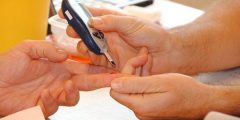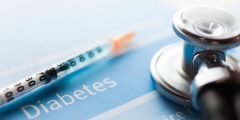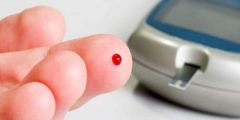When is blood sugar low?
Blood sugar is considered low if it is... Less than 70 mg/dLThis condition is known as hypoglycemia, and it occurs most commonly in people with type 1 diabetes.
Signs and symptoms of low blood sugar
Symptoms of low blood sugar occur quickly, may vary from person to person, and range in severity from mild to severe. The most common symptoms include:
- shivering;
- Stress or anxiety.
- Sweating and chills.
- irritability;
- confusion.
- Rapid heartbeat.
- Feeling dizzy or dizzy.
- hunger.
- nausea;
- pallor of the skin;
- Feeling sleepy.
- Feeling weak or low in energy and lethargy.
- Vision problems.
- Tingling or numbness in the lips, tongue, or cheeks.
- headache;
- Coordination problems.
- Screaming during sleep or having nightmares.
- Convulsions.
Are the symptoms of low blood sugar sufficient to confirm infection?
The only way to confirm whether you have low blood sugar is Conducting a check on blood sugar levels using a special device that can be obtained from pharmaciesIf possible, but if symptoms begin and you are unable to undergo an examination, we advise you to seek treatment for the condition immediately.
Read also:The effect of gestational diabetes on the fetusTips to relieve symptoms of low blood sugar
Here are some tips that may help you relieve your symptoms:
- Eat or drink 15 to 20 grams of glucose or carbohydrates immediately, for example:
- Drink 1/2 cup of sweetened fruit juice, such as apple, grape or cranberry, but avoid orange juice if you have kidney problems.
- Drink half a can of sweetened soda.
- Eat a tablespoon of sugar, honey, or corn syrup.
- Wait for a while 15 min Check your blood sugar again. If it's still low, eat or drink 15 to 20 grams other than glucose or carbohydrates.
- Wait for a while 15 Another minute, then check your sugar level, and repeat these steps until your sugar level returns to normal.
- If your next meal is in an hour, eat a snack (like a cookie or a piece of fruit) to keep your blood sugar within normal range.
Tips for treating severe low blood sugar
If low blood sugar persists despite trying the previous methods, and the person feels dizzy and dizzy, the following steps are recommended:
Read also:Insulin resistance analysis- A glucagon injection should be given if the patient has one, and if you do not know how to use it, call emergency services.
- Never try to put food or drink into the mouth of an unconscious person because they may choke.
- If the person regains consciousness after the injection is given, offer him some food, such as a few cookies, a cereal bar, or a sandwich.
- You should continue to monitor the person for any signs or symptoms that recur.









